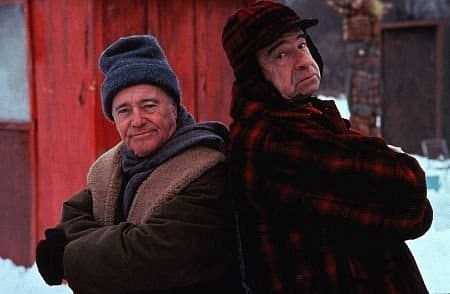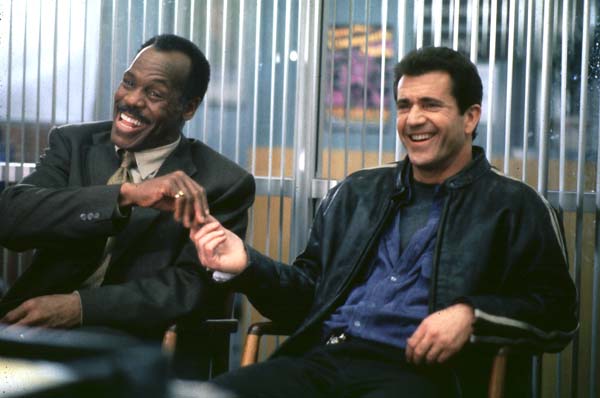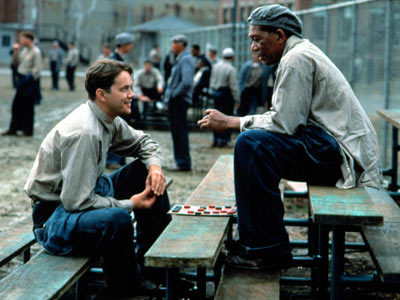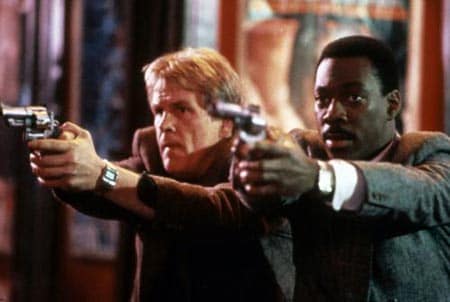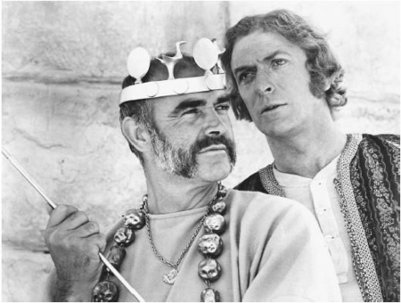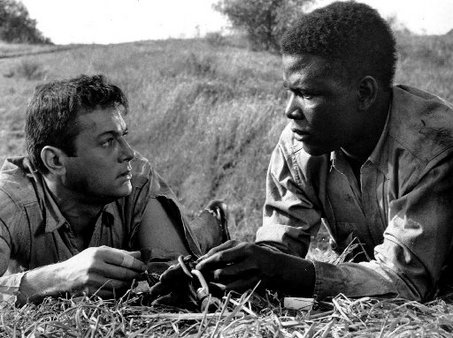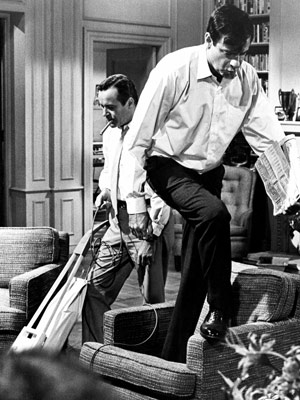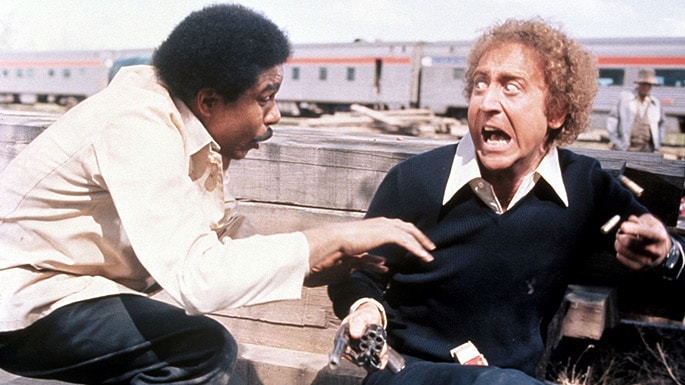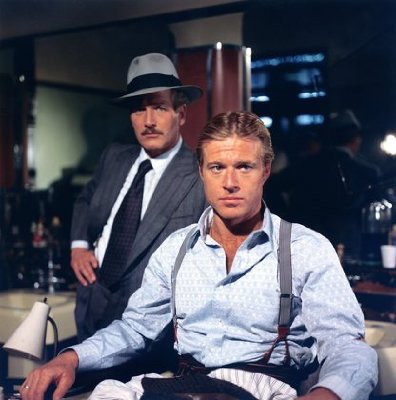Saturday, October 17, 2009
Friday, October 16, 2009
Friendship

Growing up as an only child and leaving town when I was 18 to launch my radio career, I didn't maintain lifelong male friendships.
I had friends who I stayed in contact with until I moved and then we would lose track of each other.
My wife, on the other hand has maintained friendships with some of her friends for over 30 years and it was a combination of her example and other circumstances that have changed the way I handle my relationships with my guy friends.
One change is that I have lived in the same city for 11 years. And that city is the one I grew up in.
Another is that I have a career where I go out and meet people. And I have also reconnected with old friends too. Just last week, I saw a former co-worker of mine from 1982 and he and I reconnected.
Finally, it was about 7 years ago that I became friends with a co-worker who was a bit of a mentor to me, but also an equal when we worked together. He is 18 years older than me and we continue to work together on various projects.
If you need some examples of male bonding, check out these movie examples from the AOM blog:
Posted: 08 Oct 2009 08:36 PM PDT
The buddy movie represents an uniquely American genre of cinema. Instead of a male-female romantic couple being the focus of the story, buddy movies center on the relationship between two heterosexual males. Buddy movies are unabashedly about male bonding and friendship, and they all pretty much follow the same script. Two or more men with different personalities or backgrounds are thrown together. At first they don’t get along because of their differences, but by the end of the movie they work through their issues and become best buddies. For the most part, buddy movies have been comedies that use the contrasting personalities of the male leads to set up gags, but writers and directors have also used the buddy movie to explore issues of race, class, homosexuality, and religion as it relates to masculinity.
Below, we’ve listed 15 of the best buddy movies ever made. If you’re looking to do something on your next guy’s night, consider renting one of these classics that pay homage to male friendship.
Grumpy Old Men
There are several sub-genres within the buddy movie genre itself, including the geriatric buddy film. Grumpy Old Men is arguably the best entry in this category. Walter Matthau and Jack Lemmon team up to play two grizzled friends who love to hate each other. They fought since they were kids. You never know why, you only know they despise each other. Things only heat up when an attractive older woman (played by Ann Margaret) moves into the neighborhood. Despite their outward disgust with each other, the two men deeply care for one another. Filled with great one-liners and lots of charming old music, Grumpy Old Men makes a great movie to watch with grandpa.
Swingers
Swingers reminds you of why it’s so important for a man to have friends. Mike (Jon Favreau) is a comedian in L.A. who has hit a real rough patch in his life. His longtime girlfriend back in Queens dumped him, he can’t land any gigs, and he hasn’t a shred of self-esteem left. Thankfully, Mike has a group of friends who rally around him and work to get him back on his feet. A svelte and young Vince Vaughn plays the fast-talking wise guy friend who peps Mike up and tries to convince him about how money he is. Mike’s friend Rob (Ron Livingston) offers more sage advice and acts as a sounding board for his downtrodden buddy. Thanks to his friends, Mike finally gets his act together and rebounds from his doldrums.
Road To Morocco
During the late 30’s and early 40’s, Bing Crosby and Bob Hope starred in a series of road movies that didn’t include much in the way of plot. I think the films were basically an excuse to get Bing Crosby to sing and Bob Hope to crack some jokes. Despite their lack of depth, the Road to… movies are a joy to watch. They’re fun, lighthearted, and don’t take themselves very seriously. Out of all the Road movies, Road to Morocco is the best. The friendship and chemistry between Crosby and Hope is legendary. Check it out.
Lethal Weapon
Lethal Weapon is a perfect example of another sub-genre of the buddy movie: the cop buddy movie. Mel Gibson plays Sergeant Martin Rigs, a loose cannon maverick cop that takes risks that verge on the suicidal. Danny Glover plays the veteran, risk averse cop. For some reason, the fates bring these two polar opposites together as partners. At first, they can’t stand each other, but as the film progresses, the two develop a bond and chemistry that’s both comedic and warming. This movie has it all- classic lines like Danny Glover’s “I’m getting too old for this sh**,” an albino villain played by Gary Busey, and of course, an example of a solid male friendship.
Butch Cassidy and the Sundance Kid
Paul Newman plays Butch Cassidy, the fast talking wise guy friend. Robert Redford plays the Sundance Kid, the sort-of-serious friend. They were “outlaws with style in a class all their own.” Old Butch and Sundance did everything together: they robbed trains together, looted banks together, and ran away from Union Pacific security posse together. Heck, they even shared the same woman (we don’t recommend that-a clear violation of the man code). Yes, Butch and Sundance were like brothers. The final scene pretty much sums up the friendship between the two. I won’t spoil it for those who haven’t seen it. Rent it and watch it today with a bud
Shawshank Redemption
Shawshank Redemption isn’t your typical buddy movie. While most buddy movies are comedies, the laughs in Shawshank Redemption are few and far between. Tim Robbins plays Andy Dufresne, a white banker from Maine who is wrongly convicted of murdering his wife. Morgan Freeman plays Red, a black man who’s been in jail for years for a crime he committed as a teenager. In normal life, the two probably would never have been friends, but within Shawshank’s old stonewalls, they form a friendship that will last a lifetime.
Abbot and Costello Meet Frankenstein
Like Cosby and Hope, Abbot and Costello starred in a series of comedic buddy films during the 1940s. The Abbot and Costello Meet… films usually had Abbot and Costello confronting one of the monsters from Universal Studio’s classic monster films. Out of all of them, Abbot and Costello Meet Frankenstein is definitely the best. Dracula and Frankenstein end up in the United States. Dracula needs to find a new brain for Frankenstein and decides that Costello’s would be a good one. Hilarity ensues. There’s nothing really deep about the friendship between Abbot and Costello; it’s just a good reminder that a best friend can make any situation fun, even when a monster is after your brain.
I Love You, Man
Making friends is difficult for the modern man. Because of work, dating, and family commitments, guys often lose touch with their buds. In I Love You, Man, Peter Klaven (Paul Rudd) is a young real estate agent in LA who’s about to marry his dream girl. Problem is Peter doesn’t have any male friends he can ask to be his best man. But his lack of a best man is the least of his problems. With no other males in his life, Peter has lost touch with his manliness. All that changes when he meets Sydney Fife (Jason Segel). Sydney is honest, comfortable in his own skin, and relishes being a man. Sure, Sydney’s conception of manliness is a little oafish, but it’s exactly what Peter needs to shake of the wussification that has held him bound and reconnect with his masculinity. This movie is crammed with laugh out loud moments, lots of memorable quotes, and dialogue and situations that really ring true. Slapping the bass!
48 Hours
Cue the awesome synth music. 48 Hours inspired the cop buddy movies of the 80’s and early 90’s (see Lethal Weapon). Funny thing is, only one of the lead characters was actually a cop. Nick Nolte plays Jack Cates, a gruff, chain-smoking, by the book cop who’s out for revenge after a notorious murderer kills several of his comrades. To help him track down the murderer, Cates enlists the help of a fast-talking con-man named Reggie Hammond (Eddie Murphy). The mismatch, like in every other cop buddy movie, creates a comedic gold mine.
The Man Who Would Be King
This buddy movie has two things going for it from the get go. First, it’s based off a short story by Rudyard Kipling. And second, the two leading men are Sean Connery and Michael Cane, two bad ass actors in their prime. The story follows two British soldiers who decide to leave the army and become kings of a remote place in India that no white man has set foot in since Alexander the Great. They decide it would be easier to subdue the village if they convince the villagers that one of them is a god. Daniel (Sean Connery) takes on the god role, but the power quickly goes to his head and causes the ruin of him and his friend. The ending of the film is amazing and captures what friendship is all about: unwavering loyalty.
The Defiant Ones
Two inmates get an unexpected shot at escape. But alas, they’re chained together. Oh, and one of them is black (Sidney Poitier) and one’s white (Tony Curtis). And it’s the late 1950s. Can somebody say “racial tension?” During the course of the movie, the two men are able to put aside their differences and work together to become free. They even become buddies by the end. At its core, The Defiant Ones is about the ability of a man’s heart to change and the loyalty among men when faced with dire circumstances.
Some Like It Hot
Don’t adjust your sets-that ain’t a couple of broads
Two out of work musicians witness the St. Valentine’s Day Massacre and have to flee for their lives from the mobsters who want them silenced. They don’t have the money to make it to Florida, so they do what any desperate man on the lam would: put on a dress and high heels and join an all woman’s orchestra. Jack Lemmon plays Jerry (aka Daphne) and Tony Curtis stars as Joe (aka Josephine). Of course with two red blooded American men disguised as women in an all women’s review, there’s bound to be some serious sexual tension going on, especially when one of the members of the group happens to be Marilyn Monroe. Zoinks! Some argue that Some Like It Hot is cinema’s greatest comedy. Whether the movie is worthy of such a title or not, it’s certainly a great buddy film.
The Odd Couple
Why is that sometimes the person who irritates us the most ends up becoming our best friend? Well, that irony is at the heart of The Odd Couple. Felix Unger’s (Jack Lemmon) wife leaves him, so he goes to live with his long time buddy, Oscar Madison (Walter Matthau). But tension sets in as the two quickly discover their opposite personalities clash like polka dots and stripes. Felix is an uptight neat freak who’s always cleaning. Oscar is a grumpy slob who revels in his filth. You can see where this is going. The chemistry between Lemmon and Matthau is fantastic; the dialogue is hilarious. See the Grumpy Old Men before they were just plain grumpy.
Silver Streak
While on a cross-country train ride, George Caldwell (Gene Wilder) finds himself accused of a crime he didn’t commit. With the help of a thief (Richard Pryor), George sets out to clear his name and save the girl of his dreams from the villain who actually committed the crime. Wilder and Pryor are hilarious together. Of course when you have a white guy and black guy teaming up together in the 1970s, racism will be a subject of the film. But Silver Streak uses comedy to show the audience how stupid racial stereotypes and bigotry is. The most memorable scene in the movie has to be when Pryor tries to teach Wilder how to “walk black.” Of course, Wilder ends up looking like a goofy white guy trying to be hip, resulting in comedic gold.
The Sting
A classic caper movie set in 1936 Chicago. Two Chicago con artists (Newman and Redford) set out to avenge the murder of a mutual friend, only to find themselves in a high-stakes game against the master of all cheating mobsters (Robert Shaw). The rapport between Newman and Redford in The Sting is similar to the one they had in Butch Cassidy: easy-going, light-hearted, but fiercely loyal.
Know of any other good buddy movies that didn’t make our list? Share them with us in the comments!Thursday, October 15, 2009
Kill the Worrywart

I don't know if the expression "Worrywart" is used anymore, but my parents generation knew what it meant.
There are all kinds of things we can worry about.
Money
Relationships
Health
are just three common examples.
Last week, I woke up at 2:30 in the morning, worrying about a presentation that I was going to give in a few hours, and had to force myself to go back to sleep.
Worry is often a needless use of our energy. It turns out the presentation went very well and the one glitch was easily fixed. (I was using a software program in a manner that I had never used it before; this was the source of my anxiety).
The DLM Blog recently posted this article on the subject:
How to Control Constant Worrying
Posted: 09 Oct 2009 05:37 AM PDT
 Worrying can be very debilitating, especially when you are not acting on the worry. When we worry about something, we are really starting to fear the worst things that can happen in any given situation. Or we worry about past events and what might have happened.
Worrying can be very debilitating, especially when you are not acting on the worry. When we worry about something, we are really starting to fear the worst things that can happen in any given situation. Or we worry about past events and what might have happened.For example, parents constantly worry about their children from when they are young to when they become adults. They worry that they will not make friends at school, they worry when they go out at night with their friends, they worry that they have made the right choices in life.
You can never run out of things to worry about and if you do you will worry that there is nothing to worry about.
When worrying is good
Not all worrying is bad; everyone does it from time to time. However, when we spend too much time worrying then it can make us tense, anxious and cause sleeping problems.
Worry is good if it makes you better prepared for a situation. For example; you are going on camping trip and you worry that you will get a flat tire, so you check your spare tire, you check the garages close by the route you are taking, you make sure you have all the right equipment to change the tire This is a good kind of worry as it makes you stop and think and prepare well for a situation.
Worry is good if you are able to turn it into a plan of action. For example, you are worried that you will not be able to pay the mortgage this month. Instead of burying your head and hoping it goes away, you take action and call the bank and explain your situation. Your bank doesn't want to take your house so you come to an agreement which is agreeable to both of you. You have taken action on your worry, and therefore your worry stops when you have managed to agree something.
Worry is good if it makes you pay attention. Worrying about the weather will never stop the rain from falling on your outdoor garden party. However, if you pay attention to the sky and put up a gazebo when the sky turns gray then being aware that the rain might come has helped you prepare for this.
If you constantly worry about something without ever taking action then this is when it becomes destructive.
5 Steps to stop worrying
- The 1 year rule
If you ask yourself 'is this going to matter this time next year', it helps you to come at your worry from another angle. - Allocate yourself worry time
This may sound a strange thing to do however if you allocate 30 minutes per day to worry about all your worries, you can spend less time during the day worrying. When a worrying thought comes into your head say to yourself 'I'll worry about that in my worry time.' - Banish the 'uncontrollable' worries
Uncontrollable worries serve no purpose whatsoever and should be eliminated from your mind. These are worries such as worrying about the weather, or worrying about exam results. You cannot events such as this so make sure you have something constructive to do when these worries pop into your head. If you are a constant worrier then this might be difficult, however with practice you can eliminate the 'uncontrollable' worries altogether. - Working through your worries
Look at each worry you have, and even better write them down in a book. Go through each worry and decide if you will be able to do something about each one.
If there is nothing you can do, then use distraction to eliminate that particular worry from your mind.
Take steps to reduce your anxiety and worry, for example if you are worrying about debt, make calls to the debtors to work out a plan, this way you reduce the worry. - Distracting yourself
As we have seen there are some worries which help us to take action and some worries which we cannot take action on. For the worries we cannot take action on we need to find a way to distract ourselves.
Here are a few things we can do.- Exercise - even if it's going for a walk and listening to music on your MP3 player.
- Mental games - Crosswords, Sudoku, reading, etc.
- Call a friend or family member
- Do the housework
How do you deal with worry?
Why not share some of your coping strategies to help other readers. Are you a born worrier? Do you worry constantly? How do you cope with worry and what are some of your coping strategies.
 | Written on 10/09/2009 by Steven Aitchison. Steven is the Author of Change Your Thoughts and works as an alcohol and drugs counselor. He has a BSc in Psychology and has a passion for studying belief formation, thought processes and values and principles. His blog focuses on personal development through changing your thoughts but covers the whole personal development field. | Photo Credit: Alyssa L. Miller |
Wednesday, October 14, 2009
Tuesday, October 13, 2009
The Great Outdoors
One that had a huge impact on my was Boy Scouts. The scout troop I joined did a lot of outdoor camping and I truly enjoyed that aspect.
My own kids didn't do much camping until later in life. It doesn't matter how young or old you are to start.
From the AOM Blog:
Getting in Touch with the Wilderness
Posted: 09 Oct 2009 11:35 AM PDT
 Image from martigras
Image from martigras
Editor’s note: This is a guest post from Adam Cook. Mr. Cook is a passionate alpinist, mountaineer and all-around outdoorsman.
Content to be wrapped up in our blanket of technology and seemingly powerless against the pull of our cozy man chair, it’s easy to forget there are tons and tons of opportunities to get outside and into the wilderness. People are always wishing for a trip to some major foreign city to see the scenery and take in something different but often fail to realize just how awesome and unique their own countryside can be. By taking up an interest outdoors, you can turn nearly every weekend into a short vacation and save a lot of money in the process.
Being outdoors puts you in direct contact with this magnificent planet of ours. City wilderness often consists of artificially placed miniature trees, a few squirrels, and a pigeon. Any other wildlife you see will likely scurry away the moment it notices you. In the deep wild though, most animals have barely had any human contact and will not hesitate to walk straight up to you. It’s really an experience to see two big-horn sheep fight within 15 feet of you and not care that you’re sticking around.
As both a blessing and a curse, being outdoors will put you in touch with your own mortality. Being in a controlled environment for the majority of one’s life will lead to feelings of immortality or at least an inflated feeling of strength and worth. Having your tent ransacked by a grizzly at 3am or getting caught in a mountain squall can put you right back in your place and teach you a lot in the process. In fact, the reason most alpinists climb is just to revel in that feeling of exposure to danger. It lets you know you’re human.
With a little know how and a few supplies, you can start becoming an outdoorsman yourself. Here are 5 points to keep in mind as you make plans to get in touch with the wilderness.
1. Choose a hobby that puts you outdoors
This sounds obvious, but a lot of guys’ hobbies are what keep them locked up inside. An outdoor hobby can be very cheap, but it can also turn into a serious investment (see: alpine climbing). If you’re on a budget, choose outdoor activities like backpacking and general mountaineering that don’t require an abundance of expensive equipment. These pursuits give you a chance for adventure and travel without costing an arm and an leg. With a pack, clothes, tent, and a dehydrator, you can hike the entire Grand Canyon for the cost of gas and the time it takes to dehydrate a few foods from your own house. This equates to around 120 dollars for an entire week (if you live in Ohio like me). If you have a quick bivy shelter, you can take an airliner to the beaches of Thailand on a moment’s notice with nothing more than a few extra bucks and a backpack.
2. Find at least one person to share your experiences with
While solo hunting, fishing, packing, and biking may be fun, it’s often the other person that will keep you at it. It’s easy to say you don’t feel like waking up at 4am to set up your deer stand, but if you have a friend tagging along, that’s usually all the motivation you need. It also gives you something to talk about and really furthers a relationship, be it with a best friend or significant other.
3. Realize your mortality
I realize I mentioned this earlier, but it needs to be said again before you take off into the wilderness. There are plenty of things out there to teach this lesson to you, but it’s best you realize it yourself right now and prepare beforehand. Knowledge is your friend here. Know that a 50 dollar Wal-Mart tent can’t withstand the 80 mph winds of a mountain squall, and know that a grizzly can break through a car door to get to a Snickers. In fact, there are two rules to being outdoors. 1) Put yourself in a position to be lucky, and 2) Don’t put yourself in a position to rely on luck. Here’s a scenario: getting up before dawn to start a hike on a cloudy day puts you in a position for the weather to clear and the day to be nice. If you only have 2 days and you decide that first day to stay in the tent and wait, you’ve put yourself in a position to rely on luck for the second days’ weather.
4. Get supplies and know where to get them for cheap
Every outdoorsman needs a few basic supplies. This includes rain gear and/or bivy gear (this can be as simple as a large trash bag), a small first aid kit, a compact mountaineering stove with a few dehydrated meals, a compass, a headlamp, and a water purification device. It’s easy to fit all this into a backpack, and even on a challenging day hike it puts you in the position to be lucky if something should turn for the worse.
There are several sites I recommend when looking for outdoor gear at a bargain price. The Sierra Trading Post sells gear and clothing for 30%-70% off and often has very good deals on name brand stuff. But my favorite site is Steep and Cheap. They offer just one greatly discounted item at a time and sell it until it’s gone. Obviously with that kind of set up, you have to act fast to snatch up the stuff you want. But they offer a variety of alerts you can sign up for that will keep you abreast of what item is currently being sold.
5. Respect the wilderness
This should go without saying, but too many people thoughtlessly dump trash outside. Just the other day when bouldering in the local park, I found a white trash bag that had to be 10 minutes from the beaten path. I don’t know how it got there, but I grabbed it and packed it out myself. Respecting the wilderness means allowing it to have the same spirit-reviving effect on others as it has on you. When you leave behind your trash or in any other way mar the wilderness, you create an eyesore that will pull others out of the meditative experience they’re having and back into the ordinary, material world they were trying to escape. You’re gazing at a scene of mighty redwoods and feeling a stirring in your soul, and then-bam!-there’s a McDonald’s bag and the trance is broken. If you say you ‘need’ to leave something behind, it’s understandable, but only once in my life did leaving trash and food behind actually aid me in survival, and I still feel bad about it to this day.
So go out and gear up. Fall is in full swing and there’s no better time to get outside!Monday, October 12, 2009
Sunday, October 11, 2009
Your Name Please?
So You Want My Job: Name Consultant
Posted: 07 Oct 2009 06:02 PM PDT
Once again we return to our So You Want My Job series, in which we interview men who are employed in desirable jobs and ask them about the reality of their work and for advice on how men can live their dream.
Today we feature the coolest job you’ve never heard of: freelance namer. A freelance what? Think about the difficulty you and your wife had in coming up with a name for your kid, a name only a few thousand people will ever use. Companies need names for their products, services, and websites, names that millions of people will remember and respond to. That’s where people like Mark Gunnion come in. He helps people and companies come up with just the right name for their new whatchamacallit. And he does it at home, sitting in his library, listening to music, and hanging out with his wife. If Mark’s job doesn’t make you want to run screaming from your cubicle, nothing will.
You can learn more about Mark at his website. Thanks for this thoroughly interesting interview, Mark! And thank you for that uber-manly beard. It is an inspiration to us all.
1. Tell us a little about yourself (Where are you from? How old are you? Describe your job and how long you’ve been at it, ect).
I was born in 1961 in Indianapolis. After high school, I got a film degree in Chicago and came out to California to be a rock star. I wrote lots of songs and formed lots of bands, recorded tons of demos and played a zillion gigs. I had a lot of fun – but only made a teensy-weensy amount of money. Maybe it was the very competitive San Francisco music scene of the 1980s, maybe it was being out of sync with the very corporate musical era, or maybe it was just insufficient chops – but after 15 years and just a few small brushes with greatness, I knew it was time to try something else.
I started naming in 1996, after hearing about the job on the radio. I did the job part-time for about four years, then in 2000 got hired by a big downtown design and interactive services agency as a full-time namer (yeah, 2000 was a boom year, alright!). So, I bought some slacks and some shiny shoes and went to work downtown for a year. After they went belly-up in the tech crash, I had enough momentum to start my own business, naming and writing taglines full-time. And I’ve been doing it freelance, full-time, ever since.
As a freelance namer, I get hired by new companies that need a name, or by established companies coming out with a new product that needs a name or a tagline. The clients typically telephone me, or write me an e-mail, checking my availability. Then I get a brief on the project, either in an e-mail or over the phone, and I go to work. I do almost all of my work at home, in my home library, or in the office I share with my wife.
2. Why did you want to become a name consultant? When did you know it’s what you wanted to do?
I had worked as a video cameraman, a market researcher, and a tape transcriber – turning audio recordings of interviews into computer documents. The transcription gig was pretty successful, to the point where I’d hired two or three other transcribers to help me out with the volume of tapes I was getting. But man, it was boring.
Then, one afternoon, I was listening to a radio show on NPR, something about “weird jobs” or something, and I heard an interview with a woman who was a “freelance namer.” As soon as I heard her describe the job, a bell went off in my head – BING! – and I said to myself, I could TOTALLY do that job! It took creativity, which I had. It took a great awareness and love for language, which I had, but it didn’t require the long, long dedication to a single idea that writing a book or teaching a class did. And I could listen to music while I did it! I didn’t have to listen to people in market research groups ramble on and on about their ATM usage or what kind of features they wanted in a mobile phone.
The woman who was interviewed on the radio show was (and is) a great namer and serious Scrabble player named Andrea Michaels, and she lived right there in San Francisco, where my wife and I lived at the time. She was in the phone book, and I called her up, and she was just wonderfully nice and generous to me, advising me where I might apply for naming work, who paid well, how it worked to be a creative freelancer, just everything I needed to know to get started. She was really helpful and open-hearted, and I couldn’t have gotten started in the business without her.
Taking her advice, I wrote up a saucy introductory e-mail, full of what I thought was catchy, punchy language, emphasizing (okay, overstating) my experience as a lyricist, touting my college degree, and claiming special interest in naming and names. I talked about the transcription business, and how that affected my appreciation for language, and talked about how I had named all my bands, and listed them all! I re-edited the e-mail a dozen times, then sent it out to the local branding and naming companies Andrea had recommended. Turned out that San Francisco at the time (January, 1996) was one of the international hubs of the naming business, due to our proximity to the name-hungry tech sector and the generally high number of entrepreneurs and venture capitalists swirling around the city. Just from the impact of those e-mails, within a week I was offered a “rush” job, a weekend gig for a great naming company called Metaphor. A few days later, the biggest player in the naming business, Landor Associates, hired me for another rush job, for more money. When I got the check from that first job, I held it in my hands, staring in disbelief. It was twice as much money as I’d ever earned playing a musical gig! After that, I was off and running and never looked back.
3. Being a name consultant is a pretty unique job and not something you can exactly major in in college. If a man wants to become a namer, what should he study and what kinds of experiences and skills should he seek to prepare for the job?
Anything that has to do with a wide knowledge of words helps. I know people who came to naming after working as English professors, poets, crossword puzzle builders, proofreaders, novelists, museum researchers, even semi-pro game show contestants. As I said, I bluffed my way in with experience as a songwriter, balanced that with my years of typing and listening to the way people really talk, and learning every way that language can be bent, twisted and used by actual people. There’s also a big component of the job that’s derived from marketing, advertising, brand management, and design, so experience in those fields could be helpful, especially if you’re seeking agency work.
Also, any type of creative work adds to your ability to improvise and try new approaches. While naming is a little bit art, it’s also business, and the business considerations definitely rule the day. But a name is so important to market success these days; it’s got to show some creativity, some energy – some life! – to function in the modern marketplace.
4. What makes a great namer? How does a man know if he has the right stuff?
You have to know the language, and you have to be able to make leaps of imagination, and you have to know the wider culture. You’re creating a tool, a commercial tool, that has to work in certain ways and have specific qualities out in the real world. So, you have to have an inkling of how an idea will fit into the howling storm of names and brands and languages and voices and sounds out there already.
You need a few minimal computer skills to deliver the product and to find the clients.
You have to be thick-skinned – 99.9 percent of what you create is rejected, usually without a second glance or any explanation.
But what you really need to succeed is to be relentless. Lots of people, if they had a thesaurus, a set of Scrabble tiles, a Swahili dictionary, and five minutes, could come up with an idea for a name. But to make it as a namer, you need to come up with a name in five minutes, and then another name five minutes later, and another one five minutes after that…for eight hours a day. For three or four days.
So, even when you think you’ve squeezed the stone dry, you need to bang your head on the table again, and again, and again, and put another CD on, and look up the key words in one more language – I have scores and scores of foreign language books, Scrabble dictionaries, slang compendia, a complete 1967 Encyclopedia Britannica – whatever it takes. Because that client is going to go through that list and go, “No, no, no, no, no, no….wellll, maybe that one….no, no, no… ooh, yick!…no, no, no…Oh! That’s a good one!” So, you have to treat it as a manufacturing process as well as a creative one, and you have to try idea after idea after idea. Because if ten percent of your ideas are good ones, it’s not like you get ten good ideas and then 90 duds. You get nine duds, then a live one, then nine more duds, then another good one, and so on. You gotta bang ‘em out.
5. How competitive is it to get a job as a creative namer? What sets a person apart from other candidates who are applying for a job?
Like a lot of creative jobs – and like being a musician in a big city – there’s always a new kid in town who’s hungry, and who’s ready to do the job cheaper, because they’re getting started. Also, it’s a pretty recent idea for corporations and small businesses to accept the idea of paying somebody to help with their name. Used to be, you thought up a company name you liked, and that made sense to you, or just used your family name, and you painted it on the front of the store. These days, every name idea can be instantly checked against the worldwide list out there, and people want names that work, not just in the next town or the next state, but all the way around the world, wherever they can find a customer. So, some customers still shop by price, and they get inexperienced people who can’t really check things out and analyze what ideas are going to work in the big picture as well as I can.
And besides the newbies, now I have to compete with things like online “crowdsourcing” sites, or naming contests, where hundreds of people around the world, boy scouts or housewives or out-of-work rock stars may chime in on a project, with little more thought than they’d put into a Twitter tweet, in hopes of claiming a $50 prize or something like that. But like so many things related to identity and brands, you get what you pay for. There’s so many moving parts involved in most naming projects that it really is worth it to have an experienced person working on it. And there’s hardly anything else a company will spend money on that they will use as often, or in as many ways, as the name.
So, I’ve found that what clients value the most is my actual experience in naming. Since I’m now approaching fourteen years in the business, I qualify for “grizzled veteran” status among namers. Lots of people try the job out for a short time, or they do it as an adjunct to another job in product development or PR writing. But having the actual experience I’ve had, over hundreds and hundreds of naming projects, literally, I don’t waste a lot of time on ideas that have a fatal flaw, and I can foresee problems and obstacles in proposed name ideas that folks with fewer miles on this road may miss.
6. You’ve worked for corporations and are now a freelance namer. What are the advantages and disadvantages of each situation?
Well, of course, the advantage to working for a corporation is that steady paycheck, the health care, the free sodas in the break room – do they still do that? But really, I have never been a corporation man, working within a hierarchy, playing the office games. That’s why I got a film degree, played guitar, extended my adolescence – and heck, I had a great time, found my wife, met David Bowie, grew a big beard. Being your own boss is a sure way to stay manly.
Of course, the downside to being a freelancer is that you’re always looking for work. When I’m not on the clock, I’m at my computer, searching the world over – literally – for new ad agencies, brand consultants, corporate identity specialists, as well as searching directly for corporations I believe to be in growth industries, places where new companies will be arising, where new alliances and mergers may be happening.
It’s my job to make sure that every person on the planet who is going to need a new name gets my e-mail in their inbox. Naming is complicated these days – I like to tell potential clients, “Kids, don’t try this at home!” So, the freelance namer also has to be a marketing expert – of himself.
7. How does a freelance namer go about finding and securing projects and clients?
Most of my work comes through companies that I have approached directly, via e-mail. I try to figure out industries where there will be new companies forming, or sectors where marketing money seems to be moving around, and I send my introductory e-mail straight into their marketing and new product development departments. I also get a lot of work from my established clientele – repeat business from agencies and consultants. Some businesses name a lot of products every year, and once I’ve come through for them, they usually come back. Also, these days, when people need names, they go searching online for “namers” and “naming,” and they find me that way.
8. What is the naming process like? How do you go about coming up with names and tag lines?
The actual core of the job is the naming part – and that’s what I love to do the most! I retreat to my work lair/library, put on some music – preferably without English lyrics! – and pull out a blank piece of paper. Some of my peers use computers every step of the way, but I like to look at the brief, make some new notes, and then just start making a list on a piece of light-green graph paper, with a purple Flair pen.
I look at every line of the brief, review the criteria and objectives for the name, and then I start writing. I write down whatever ideas come bubbling up from the materials the client has provided. I make chains of ideas – sounds, metaphors, and words - just free-form connections between different concepts derived from the client’s briefing and any conversations we’ve had. Before long, the names are just tumbling out of me. I have hundreds of reference books on language (and everything else) that I refer to, books on slang and etymology, Shakespeare, comic books, technical manuals, any kind of word-source where the name ideas might be hiding. When I’m doing the creative part, I don’t interrupt it with the availability checking, I just let the ideas pour out on to the page, where they can connect, and re-combine, and re-arrange themselves in different configurations. At the end of eight hours, there’s usually a hundred or more names scrawled down, created just for that client, ready to organize and check out.
Most jobs are done under a 30-day consulting contract, during which I will go through 3 or 4 complete naming rounds. A “round” usually takes me about a day, during which I’ll generate a big list of name ideas, 100 or more in a day. Typically, I’ll then do some availability screening on the list and report back to the client. Once they see that first list of ideas, they’ll have all kinds of feedback about what they like and don’t like, and we’ll start a “short list” of those ideas that best meet their business needs.
Then I then go back to my library and generate another round of ideas. As we’re going through the month, I’ll be checking their ongoing, ever-changing short list of favorites for various kinds of availability. Sometimes, a business needs the exact URL in the dot.com domain; sometimes they don’t need that, but they need the name to work in another language besides English, or they need a national trademark clearance in their business sector. I’m not a lawyer, but I am able to check some databases, for example, at the US. Patent Office or at Network Solutions. Of course, these days, a Google search is often the first and most valuable tool for analyzing “availability.” But there’s lots of gray areas, and so my experience with the relative shades of just how available a name really is often comes in handy.
For most jobs, I’ll do 3 or 4 of those creative days, as I try to arm the client with a half-dozen or more ideas on their short list to take ahead to the trademark lawyers for final approval. That’s the secret of the job – a namer doesn’t come up with the one, perfect name for a project. He comes up with hundreds and hundreds of ideas for the project – and the client figures out which one is perfect.
9. What is the best part of your job?
Creating something out of nothing. Being paid to be clever. Getting to listen to music! Also, setting my own schedule is important, although it turns out I’m very regimented – usually working 9 to 5, Monday through Friday.
10. What is the worst part of your job?
Looking for new clients when the economy is depressed. Naming is associated with new companies and new products, and it is a leading economic indicator, so when the whole corporate structure is holding back on spending, postponing new products, being more tight-fisted with R&D, being more skittish with marketing and advertising, then the budgets for naming and branding are often under a lot of stress.
11. What’s the work/family/life balance like?
That’s one of the best parts of the job! I work at home almost all the time. My wife is a graphic designer, and like me, has clients all over that she deals with through the internet. So, we often work back to back in the same comfy home office, share all our meals, and make each other coffee in the afternoon. I get to visit with my big cat, Daisy, any time I want to. Oh, and I’m a fully-licensed napper.
12. What is the biggest misconception people have about your job?
That I just come up with one name for a given job. That’d be great!
13. Any other advice, tips, or anecdotes you’d like to share?
Naming is a fine, manly job – though lots of namers are women, too – and it’s a new enough career that you can go a long way with just a good thesaurus, a webpage, and lots of enthusiasm. It’s one of those gigs where, if you do some research and keep looking, you can get a start, and once you’ve gotten started, it’s just like any other business – you deliver the goods, out-think the competition, and keep the customer satisfied. It suits the way my mind works just perfectly, and I really enjoy hearing an excited client looking through a bunch of name ideas they like. I always feel like I’ve used a little special skill I have to solve a problem they thought was going to be a lot harder.
I love my job!
DownloadThe Art of Manliness Free Man CookbookDownloadThe Art of Manliness Guide to Being a Gentleman



